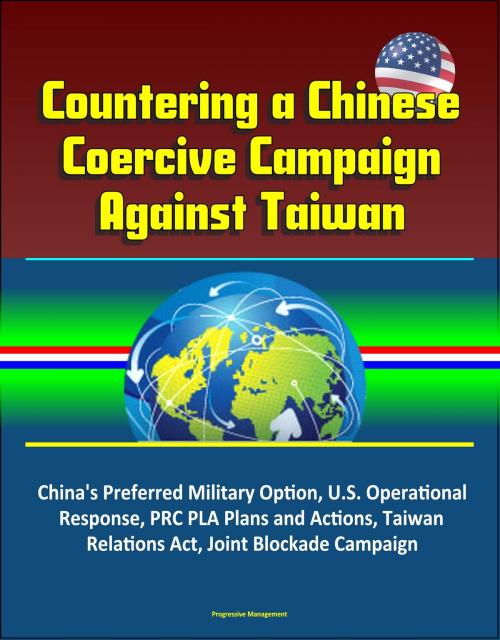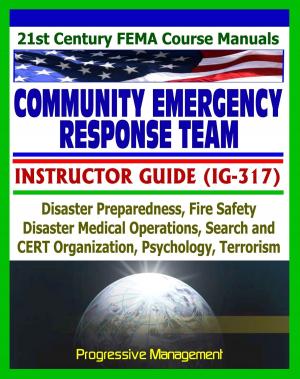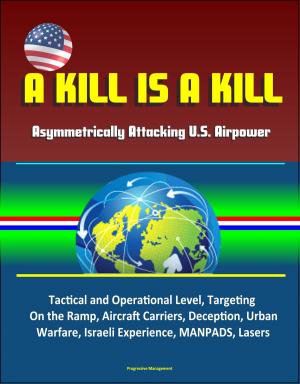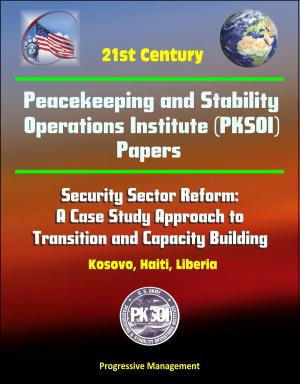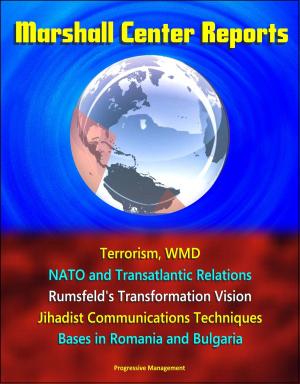Countering a Chinese Coercive Campaign Against Taiwan: China's Preferred Military Option, U.S. Operational Response, PRC PLA Plans and Actions, Taiwan Relations Act, Joint Blockade Campaign
Nonfiction, History, Asian, China, Military, United States| Author: | Progressive Management | ISBN: | 9781310048623 |
| Publisher: | Progressive Management | Publication: | July 14, 2016 |
| Imprint: | Smashwords Edition | Language: | English |
| Author: | Progressive Management |
| ISBN: | 9781310048623 |
| Publisher: | Progressive Management |
| Publication: | July 14, 2016 |
| Imprint: | Smashwords Edition |
| Language: | English |
This excellent report has been professionally converted for accurate flowing-text e-book format reproduction. Rising tensions across the Taiwan Strait have increased the likelihood that China would use force in a crisis over the status of Taiwan. This paper argues that a coercive campaign is the most likely manner in which China would use force to achieve its political goals. Chinese military doctrine and Taiwan's critical vulnerabilities are examined to assess how China might implement a coercive campaign. In the event US forces are directed to intervene in such a conflict, the paper proposes a concept of operations which aims to deter escalation and to frustrate and exhaust Chinese efforts to isolate and coerce Taiwan.
Chapter I - Introduction * Chapter II - Coercive Campaign - China's Preferred Military Option * Chapter III - Likely Features of a Chinese Coercive Campaign * Chapter IV - Concept of Operations for a US response to a Chinese Coercive Campaign * Chapter V - Conclusions * Chapter VI - Recommendations
It is likely that demonstrations, such as the Lianhe-2007 PLA exercise simulating an assault on Taiwan, will continue to occur over time. Though disturbing, the message of such demonstrations is targeted at internal Chinese audience as much as - or more than - Taiwan and the US. Publicly ignoring such demonstrations, or at the most issuing a measured diplomatic statement that such provocations are unhelpful, is appropriate.
At the other end of the spectrum, a bolt-out-of-the-blue invasion of Taiwan is possible but unlikely. Success of such an invasion would be far from certain. The Chinese have limited amphibious lift and air assault capability and lack joint training and exercises on large-scale amphibious landings. The US ability to surge naval and air forces to interdict PLA amphibious forces at sea and to attack any shore lodgments that are achieved, along with substantial Taiwanese defenses, make prospects of Chinese success appear grim. Moreover, such an invasion would risk uncontrolled horizontal and vertical escalation, including regional war against the US, Japan and South Korea, and possibly even a nuclear exchange. Alternatively, an embarrassing failure of the invading force could lead to turmoil within China and the unseating of the Chinese Communist Party.
In the event that China determines that it is no longer able to manage the issue of Taiwan through pronouncements and military demonstrations, the most likely "next step" is for China to employ coercive campaign against Taiwan.
This excellent report has been professionally converted for accurate flowing-text e-book format reproduction. Rising tensions across the Taiwan Strait have increased the likelihood that China would use force in a crisis over the status of Taiwan. This paper argues that a coercive campaign is the most likely manner in which China would use force to achieve its political goals. Chinese military doctrine and Taiwan's critical vulnerabilities are examined to assess how China might implement a coercive campaign. In the event US forces are directed to intervene in such a conflict, the paper proposes a concept of operations which aims to deter escalation and to frustrate and exhaust Chinese efforts to isolate and coerce Taiwan.
Chapter I - Introduction * Chapter II - Coercive Campaign - China's Preferred Military Option * Chapter III - Likely Features of a Chinese Coercive Campaign * Chapter IV - Concept of Operations for a US response to a Chinese Coercive Campaign * Chapter V - Conclusions * Chapter VI - Recommendations
It is likely that demonstrations, such as the Lianhe-2007 PLA exercise simulating an assault on Taiwan, will continue to occur over time. Though disturbing, the message of such demonstrations is targeted at internal Chinese audience as much as - or more than - Taiwan and the US. Publicly ignoring such demonstrations, or at the most issuing a measured diplomatic statement that such provocations are unhelpful, is appropriate.
At the other end of the spectrum, a bolt-out-of-the-blue invasion of Taiwan is possible but unlikely. Success of such an invasion would be far from certain. The Chinese have limited amphibious lift and air assault capability and lack joint training and exercises on large-scale amphibious landings. The US ability to surge naval and air forces to interdict PLA amphibious forces at sea and to attack any shore lodgments that are achieved, along with substantial Taiwanese defenses, make prospects of Chinese success appear grim. Moreover, such an invasion would risk uncontrolled horizontal and vertical escalation, including regional war against the US, Japan and South Korea, and possibly even a nuclear exchange. Alternatively, an embarrassing failure of the invading force could lead to turmoil within China and the unseating of the Chinese Communist Party.
In the event that China determines that it is no longer able to manage the issue of Taiwan through pronouncements and military demonstrations, the most likely "next step" is for China to employ coercive campaign against Taiwan.
